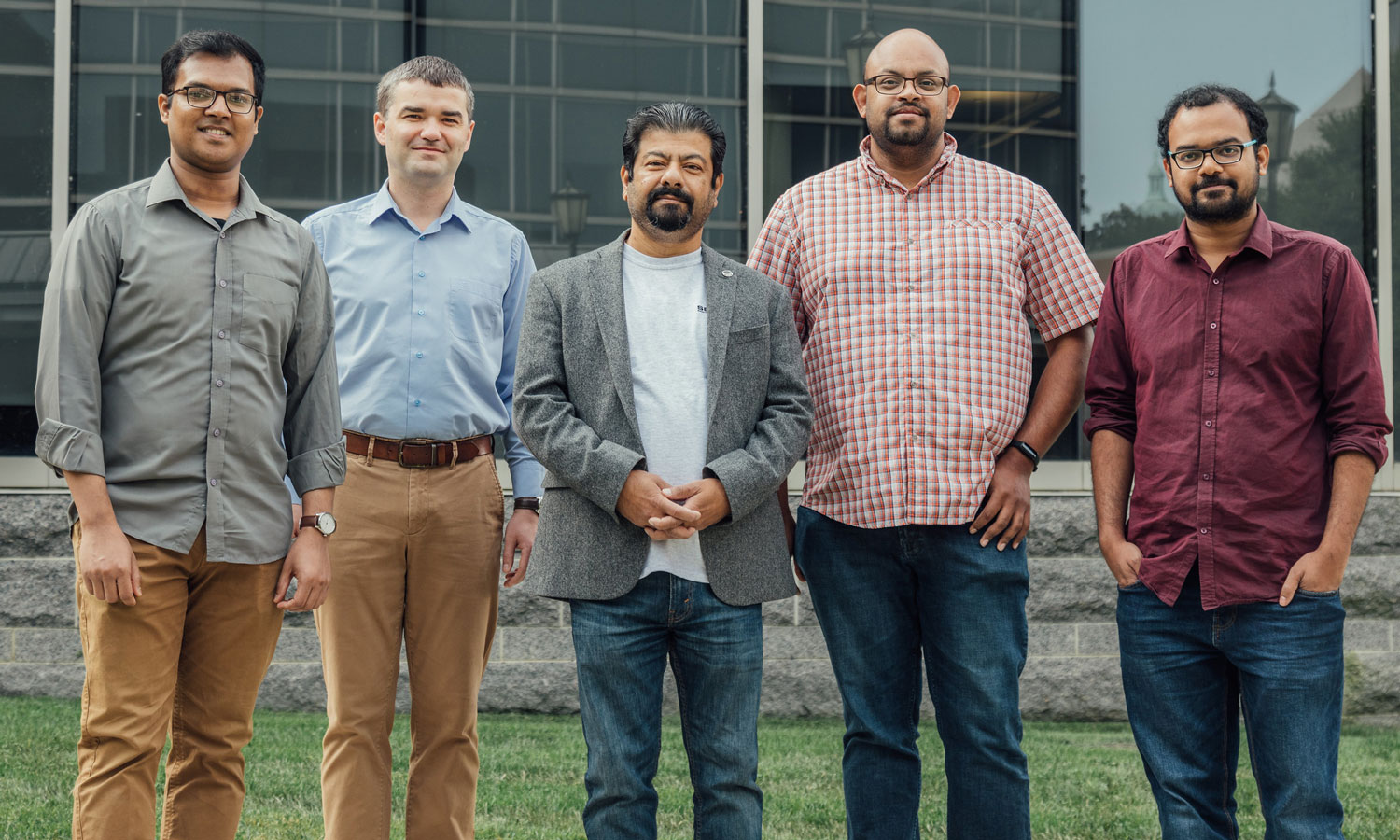Infrared imaging is a crucial tool for the United States military. It aids in surveillance and detection, helping keep troops safe in combat scenarios. Mid-wave infrared (MWIR) sensing technology specializes in the detection of large vehicles like tanks and airplanes. Maritime operations also rely heavily on this important technology. However, due to the technology’s need for supercooling chambers, the devices are costly and bulky, often mounted to trucks or other large vehicles. Nibir Dhar, Ph.D., professor of electrical and computer engineering, is developing a method for miniaturizing MWIR technology to make it more affordable and easily carried by soldiers, who most need the technology.
Existing outside the human eye’s visible light spectrum, infrared light is a form of electromagnetic radiation that can be felt in the form of heat. All objects, whether hot or cold, emit infrared radiation. Like all electromagnetic radiation, you can measure the distance between wave peaks to quantify the kind of radiation. Long wave infrared, between 8 and 12 micrometers, encompasses objects like the human body, which at 37 degrees Celsius registers around 9.3 micrometers. Midwave infrared, between 3 and 5 micrometers, includes objects that are hot. Imagine the tip of a soldering iron at 300 degrees celsius, which is equivalent to five micrometers. Even hotter objects, between 1 and 2.5 micrometers, can be detected with short-wave infrared.
It is within this midwave range of 3 to 5 micrometers that large vehicles, like tanks and airplanes, become visible to detectors. However, MWIR devices are prone to electronic noise from thermally generated charges in the detectors. This form of interference can be caused by heat generated within the sensor during operation, electronic noise such as dark current or other signals not originating from the object being imaged. The use of cryogenic cooling chambers helps counteract this phenomenon and enables high-fidelity infrared images, but they greatly increase the size and cost of the detectors.
“As photons are absorbed by the infrared detector, they undergo a process that promotes an electron in the conduction energy band, leaving behind a hole in the valence energy band and forming an electron-hole pair,” said Nibir. “These photogenerated carriers are eventually converted into an electrical signal to form the infrared image on a visible display."
Cryogenic cooling of the infrared detector affects photogenerated carriers in two ways. First, it reduces the number of thermally generated electrons that are present in the detector from getting promoted to the conduction band. These thermally generated electrons can contribute to noise in the image, so reducing their number helps improve image quality. Second, the cooling increases the lifetime of the photogenerated carriers. This means that they are more likely to survive before recombining, thus contributing to the signal current, which also helps to improve image quality.
Dhar and his team are working to develop an alternative to cryogenic cooling. Innovations in photon management allow photon absorption in thinner infrared-absorbing materials such as Mercury Cadmium Telluride (HgCdTe). Then, using a graphene lattice and thin photon absorber, it is possible to quickly transport photogenerated carriers to where their information can be converted into an electrical signal. Dhar hopes to create smaller, portable MWIR devices with enhanced image quality. This process involves “doping” graphene with boron. In electronics, doping is the process of adding certain chemical elements to a semiconductor in order to change its properties.
In this instance, boron replaces a carbon atom and acts as a p-type dopant giving positive charged “holes”. The n-type produces negatively charged electrons. This material is made with mercury cadmium telluride, a semiconductor material doped with indium atoms. This structure forms a p-n junction device that facilitates the extraction of photogenerated carriers corresponding to the infrared light coming from the object being observed. An added feature of boron doping is the lowering of the Fermi level, a theoretical concept in solid-state physics that represents the highest energy level that an electron can occupy in a material at absolute zero temperature. The effect, in this instance, would effectively increase the operating temperature of the paired MWIR device, where a thin HgCdTe material can be used to reduce thermally generated noise, allowing for it to work at room temperature without the need for cryogenic cooling.
“While we’re able to create the boron doped graphene bilayer, much work needs to be done to refine the experimental processes and our theoretical models we’ve developed to ensure a consistent product,” said Dhar.
Outside of military use, miniaturization of MWIR technology would have many civilian applications. In medical imaging, MWIR, in combination with long-wave infrared sensors, would be used to aid diagnosis and treatment of PTSD and other medical issues, like blood flow anomalies. Driver assistance and driverless vehicle mechanisms of the transportation industry could replace thermal bolometers with MWIR photon devices to increase the sensitivity and range of their detectors. For industrial companies, MWIR cameras are essential safety equipment that can detect hidden gas leaks. Even hunters can make use of MWIR technology to improve visibility in low-light scenarios.
